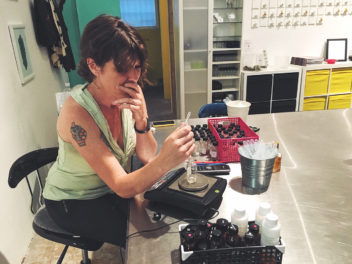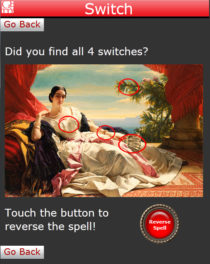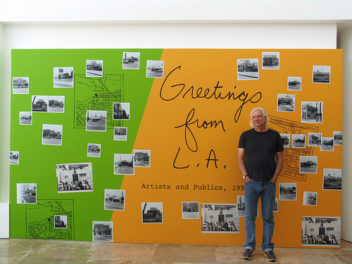
Strawberry basket by Kelly Church (Ottawa/Chippewa) at the Autry
Among the great exhibitions now on view in L.A. is The Art of Native American Basketry: A Living Tradition at the Autry, a beautiful installation of over 250 baskets from some 100 cultures, from tightly woven storage vessels to brightly colored ornamental hats—to, even, a whimsical masterwork of curved wood formed into the shape of a strawberry.
Originally slated to close this Sunday, and now (good news!) extended to May 9, 2012, the show features a small fraction of the nearly 14,000 Native American baskets held by the Autry National Center. But you can see thousands more anytime, online. An astounding 4,180 baskets from the museum’s collection, the largest holding of Native American basketry in the world, are available to explore, free, in the Autry’s collection database. Here you can browse by material (650 objects woven with our local native deergrass, for example) and iconography (such as this basket with a rattlesnake design).
Bringing collections online in such a comprehensive way is a huge undertaking, encompassing not only cataloguing and technology but also photography, rights issues, and more. For some museums, there’s also the massive task of inventorying the collection—a necessary first step in making it available for enjoyment and study.
Helping to make the Autry’s online database possible was a grant from the Getty Foundation, which allowed the museum not only to catalogue the collection but also to develop the interpretive content about it. The Foundation has a long history of helping to make collections available online, beginning with our Electronic Cataloguing Initiative (ECI) in 1997, when the Web was still underutilized by museums. At that time, we provided grant funding to 24 local organizations to help them make online access to basic information about their collections a reality.
The Autry now knows exactly what items it has and where the objects can be found in its vast store rooms, down to the last barcode. And it is making these objects available to all—online.
More results of the Foundation’s Electronic Cataloguing Initiative are detailed in a report available online, which shows that the initiative has had a collective impact on Los Angeles, helping make hundreds of thousands of objects available on the Web and positioning L.A. in the vanguard of cities with online access to its museum’s collective holdings.
The Southwest Museum of the American Indian is currently closed for conservation of the collection, which is slated to be completed in 2013. Until then, I’m happy to browse its masterpieces online.




Comments on this post are now closed.